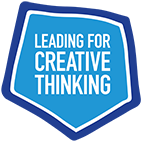Leadership to support teaching for creativity
Bullard, A. and Bahar, A. (2023). Journal of Creativity, 33:1. Common barriers in teaching for creativity in K-12 classrooms: A literature review.
Read the whole article here
Summary
This paper reviews empirical studies (i.e. based on observations and actual experiences rather than derived from theories or beliefs) undertaken between 2006 and 2022. The authors have chosen to search only for papers exploring the concept of ‘teaching for creativity’. This emphasis (rather than ‘teaching creatively’ or ‘creative teaching’) places the stress on understanding how teachers can focus more intentionally on developing creativity in pupils.
In its introductory section the authors offer two key messages for school leaders:
- While teaching for creativity may appear to be yet another expectation to meet in the classroom, carefully weaving creativity throughout lessons stimulates deep learning and assists students in absorbing essential knowledge.
- Cultivating creative ability enables students to be more adaptable and flexible in a fast-paced and unpredictable global society, as well as increases their competence to work peacefully and efficiently across cultures and with others who think differently.
Three barriers are highlighted - teachers’ self-efficacy and beliefs, environmental constraints and what the authors call ‘new teacher training with old practices’, a recognition of the many forces in the system which prevent change.
Barrier 1 - Teachers’ self-efficacy and beliefs
Although many teachers are clearly creative in their own lives, it seems that, when it comes to the classroom they do not believe they can develop young people’s creativity, especially in schools where the climate is not conducive. Some teachers also believe that creativity cannot be taught and that creativity only sits within the arts and this prevents them from teaching for creativity across the curriculum.
Barrier 2 - Environmental constraints
The authors interpret the idea of environment widely to include many cultural factors. Some teachers experience anxiety as they seek to reconcile the pressures of a ‘standards’ agenda with their wish to foster the creativity of their pupils. Some see standardised tests a barrier. Other environmental barriers identified include inadequate textbooks, lack of time, too many subjects to cover, crowded classes and behaviour issues. In PE it was noted that barriers were often emotional as pupils sought to overcome challenges. Grouping by academic ability can lead to unequal participation and result in a lack of risk-taking.
Barrier 3 - A reluctance to change
Entrenched attitudes among professionals mean that any kind of habit change can be hard, with teachers who have tried teaching for creativity sometimes reverting to more familiar and comfortable approaches they used beforehand. When creativity is broken down into being inquisitive, imaginative, disciplined collaborative and persistent and teachers are trained to use these, pupils’ creativity has been found to increase.
The authors conclude their study with the following recommendations for school and system leaders:
- Revise class schedules to provide more time for the creative process
- Include creativity and/or related terms in curriculum standards
- Use professional development on assessing students' creative thinking rather than relying solely on standard multiple choice-question assessments
- Strategically select resources that implement creativity, and
- Encourage and acknowledge positive and effective chaos as students engage in creativity.
Reflecting Together
- To what extent do the three barriers identified by the authors match your own experiences?
- What do you understand by 'positive and effective chaos' as part of the creative process?
- Which of the five recommendations above align with your thinking best?
- What barriers have you encountered in your school and how might you overcome these?
Common barriers in teaching for creativity in K-12 classrooms: A literature review
If you enjoyed reading this article, take a look at this story from Sarah Childs who shares her experiences of inspiring teaching and learning for creativity across the curriculum at Penryn College.
